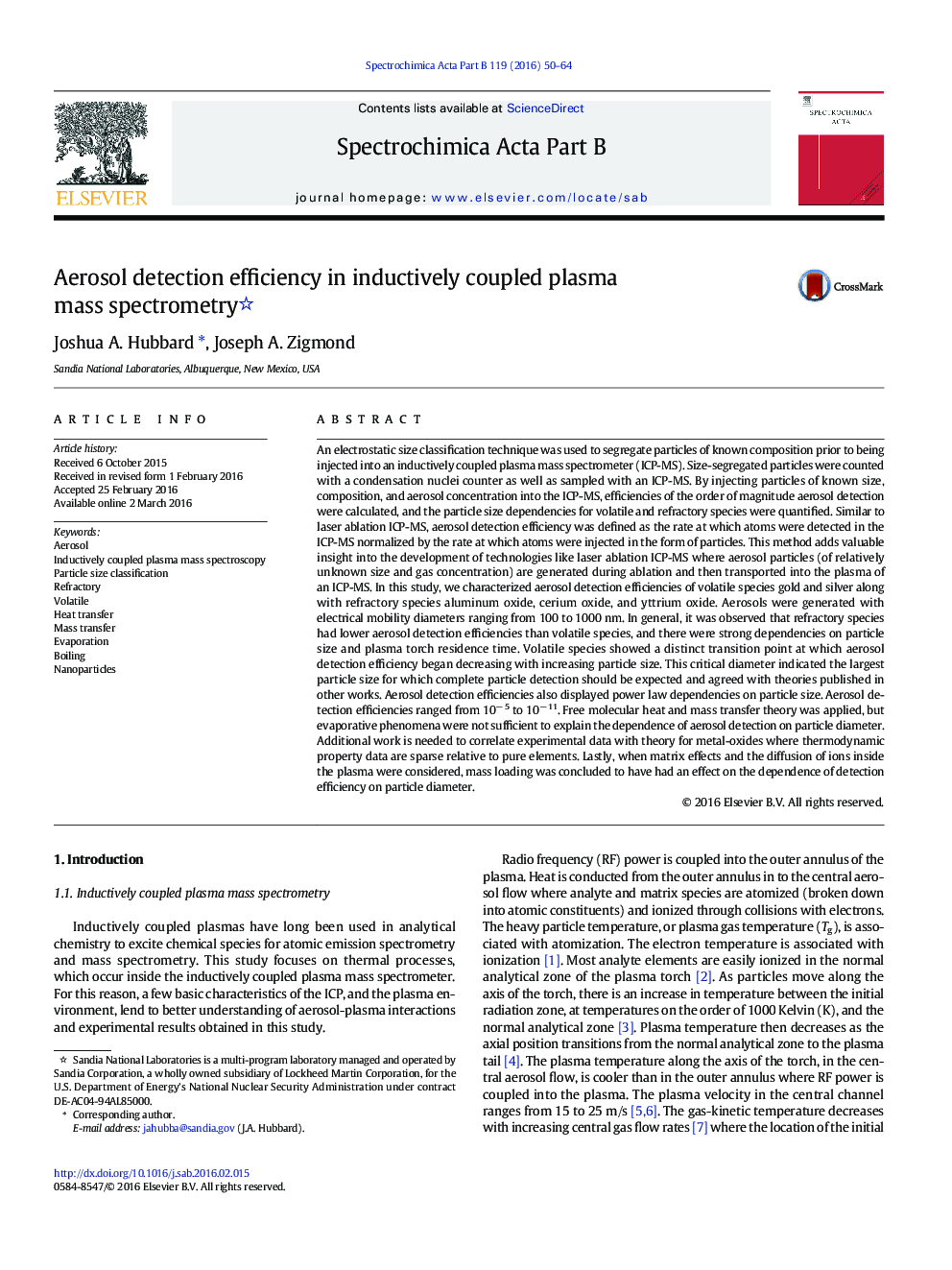| کد مقاله | کد نشریه | سال انتشار | مقاله انگلیسی | نسخه تمام متن |
|---|---|---|---|---|
| 1239463 | 1495684 | 2016 | 15 صفحه PDF | دانلود رایگان |
• Aerosols of known size, composition, and concentration were injected directly into an ICP-MS.
• An aerosol detection efficiency for the ICP-MS was calculated.
• Carrier gas flow rate, particle size, and particle composition affected aerosol detection efficiencies.
• Free-molecular evaporative heat and mass transfer was applied but did not adequately predict data.
• Data suggest boiling phenomena, ion diffusion in the plasma, and space charge augment aerosol detection in ICP.
An electrostatic size classification technique was used to segregate particles of known composition prior to being injected into an inductively coupled plasma mass spectrometer (ICP-MS). Size-segregated particles were counted with a condensation nuclei counter as well as sampled with an ICP-MS. By injecting particles of known size, composition, and aerosol concentration into the ICP-MS, efficiencies of the order of magnitude aerosol detection were calculated, and the particle size dependencies for volatile and refractory species were quantified. Similar to laser ablation ICP-MS, aerosol detection efficiency was defined as the rate at which atoms were detected in the ICP-MS normalized by the rate at which atoms were injected in the form of particles. This method adds valuable insight into the development of technologies like laser ablation ICP-MS where aerosol particles (of relatively unknown size and gas concentration) are generated during ablation and then transported into the plasma of an ICP-MS. In this study, we characterized aerosol detection efficiencies of volatile species gold and silver along with refractory species aluminum oxide, cerium oxide, and yttrium oxide. Aerosols were generated with electrical mobility diameters ranging from 100 to 1000 nm. In general, it was observed that refractory species had lower aerosol detection efficiencies than volatile species, and there were strong dependencies on particle size and plasma torch residence time. Volatile species showed a distinct transition point at which aerosol detection efficiency began decreasing with increasing particle size. This critical diameter indicated the largest particle size for which complete particle detection should be expected and agreed with theories published in other works. Aerosol detection efficiencies also displayed power law dependencies on particle size. Aerosol detection efficiencies ranged from 10− 5 to 10− 11. Free molecular heat and mass transfer theory was applied, but evaporative phenomena were not sufficient to explain the dependence of aerosol detection on particle diameter. Additional work is needed to correlate experimental data with theory for metal-oxides where thermodynamic property data are sparse relative to pure elements. Lastly, when matrix effects and the diffusion of ions inside the plasma were considered, mass loading was concluded to have had an effect on the dependence of detection efficiency on particle diameter.
Journal: Spectrochimica Acta Part B: Atomic Spectroscopy - Volume 119, 1 May 2016, Pages 50–64
